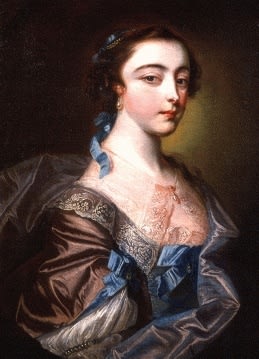
John Astley
To view all current artworks for sale visit philipmould.com
John Astley was one of a number of English painters who sought their fortune in Ireland during the mid-Eighteenth Century, and indeed, during the three years that he was in the country (he arrived c.1756) he made £3,000 by his painting. Although signed works are rare, a considerable body of work remains (as his income would suggest), and single bust compositions seem to have formed the mainstay of his output. Astley married a 'suitable Irish girl' during his time there before returning to England and a new wife in 1759; a rich widow who allowed the 'dashing, reckless, conceited, clever and out of elbows individual' to ignore painting and waste £150,000 of her estate (1).
As Pasquin relates of Astley, 'He thought that every advantage in civil society was compounded in women and wine: and, acting up to this principal of bliss, he gave his body to Euphrosyne, and his intellects to madness. He was as ostentatious as a peacock, and as amorous as the Persian Sophi; he would never stir abroad without his bag and his sword; and, when the beauties of Ierne sat to him for their portraits, he would affect to neglect the necessary implements of his art, and use his naked sword as a moll-stick. He had a haram and a bath at the top of his house, replete with every enticement and blandishment to awaken desire; and he thus lived, jocund and thoughtless, until his nerves were unstrung by age; when his spirits decayed with his animal powers, and he sighed and drooped into eternity!'(2)
The sitter is a lady of the Armstrong family of Kilsharvan, Co. Meath; her portrait originates from Kilsharvan House, where it has been in the property of the Armstrong and McDonnell families for the last two hundred years. In Lewis' 1837 topographical dictionary of Ireland he lists Kilsharvan as the ''Property of A Armstrong Esq'', following which, in1845, the house and contents were passed into the McDonnell family through Mrs Katherine Anne Armstrong (nee McDonnell) after their son's early death in India. Mr Andrew Armstrong is likely to have been the sitter's grandson.
(1) A. Crookshank, The Painters of Ireland, (1978), p. 151
(2) Ibid.
Provenance
The Armstrong Family, Kilsharvan, Co. Meath, Ireland.Be the first to hear about our available artworks
* denotes required fields
We will process the personal data you have supplied in accordance with our privacy policy (available on request). You can unsubscribe or change your preferences at any time by clicking the link in our emails.